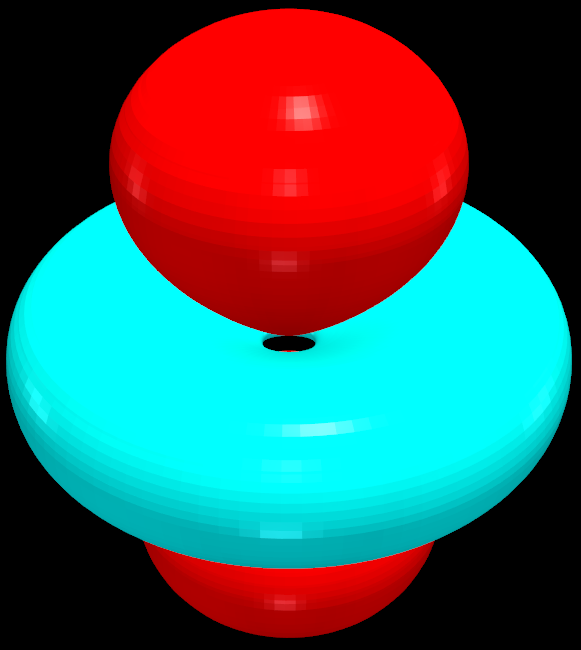An atomic orbital is a complex function of 3D space, $\psi(x, y, z) = \psi(r, \theta, \phi)$. It is challenging to visualize 3D functions. One way to do so is to calculate the probability density $P(x, y, z) = |\psi(x, y, z)|^2$ and plot isosurface contours of $P(x, y, z)$, that is surfaces in 3D space on which $P(x, y, z) = c$ for some constant number $c$. Note that for every value of $c$ the corresponding isosurface contour "contains" a total probability $$ \text{Prob}(P(x, y, z) <= c) = \int_{|\psi(x, y, z)|^2<=c} |\psi(x, y, z)|^2 dV = p_c $$ (Note that the integration bound here is very strange. we cannot analytically calculate $p_c$ from $c$ or vise-versa, but the calculation can be done numerically without too much trouble.)
The OP seems to suggest that, when atomic orbitals are visualized, we typically choose $c$ so that $p_c=0.9$. The OP is correct that when visualizing atomic orbitals using isosurface contours we do have to choose some value for $c$ (and correspondingly a value for $p_c$). But the OP is incorrect that there is any standardized value chosen for $p_c$ across all references. See e.g. This orbital n=4, l=1, m=1 orbital on Wikipedia shown with $p_c=0.45$ (or orbital in my profile pic which shows $(n, l, m)=(4, 3, -1)$ with $p_c=0.6$). I also would suggest that $p_c=0.9$ is an uncommon value to select for $p_c$. As we'll see below, $p_c=0.9$ contains "too much" probability so that the orbitals look very "fat" and it's hard to see the geometric features of the orbital as clearly. I've found $p_c=0.6$ to be a good value for visualizing lots of different orbitals.
The OP asks:
why did we choose the points as they are, and not in a different way with a different shape made up of a different set of points that also encompasses a 90% probability of an electron being there?
The answer is that, once a probability threshold $p_c=0.9$ is selected, the wavefunction magnitude threshold $c$ such that $p_c=0.9$ is uniquely selected. The isosurface contour is then, again, uniquely selected by $|\psi(x, y, z)|^2 = c$. Most succinctly: When we see isosurface contour visualizations of atomic orbitals, those surfaces are selected so that $|\psi(x, y, z)|^2$ is constant on the surface, this is the definition of an isosurface contour.






